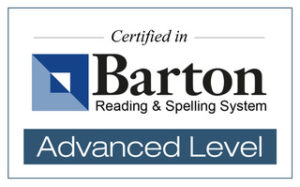
Reading comprehension is the goal of reading, and the most direct route to good reading comprehension is to make the word recognition process automatic, so a student can focus all of their mental energy on the meaning of the story.
Good readers do not struggle over words—continually guessing or sounding them out. When they see words, they immediately recognize them.
Phonemic awareness is the most common source of reading difficulties. Scientific studies of the brain have proven that it is not the visual processing part of the brain that is most active when reading. It involves more of the auditory processing area of the brain. One must be able to auditorily distinguish and manipulate sounds to read. This skill is called Phonemic Awareness.
Those with good phoneme awareness are usually good at remembering the words they read. They learn new words quickly and do not forget them. Those weak in phoneme awareness learn words slowly and often forget them. Studies show that as phonemic awareness improves, word reading typically improves as well.
We want our students to be able to manipulate sounds quickly…within 2 seconds, so we can move our students to the level of “automaticity” for them to become successful readers.
Before we get into the how of phonemic awareness, let’s clear up a few terms that are often confused.
Often the terms phonics and phonemic awareness are used interchangeably, but they are two separate skills. Phonemic awareness activities are oral and can be done blindfolded…they involve an awareness of the individual sounds in a word. When you tie those sounds with print (letters)….then it becomes phonics.
Other terms that are often confused are phonological awareness and phonemic awareness.
Phonological awareness is the umbrella term for the knowledge of sounds in spoken language. Phonemic awareness is a subset skill and is the highest level of phonological awareness. For reading success, it is critical that we explicitly teach at the phoneme level.
Even within the subset of phonemic awareness, there are several levels.
We often stop at the skills of blending and segmenting phonemes, but we must help students get to the level of automaticity with phoneme manipulation. Here are some examples that might clear this up (remember these are all auditory):
Blending: You would say the individual sounds and students blend them to make a word. You say /s/ /u/ /n/ and the student blends those to say the word: sun.
Segmenting: Now it’s the opposite. You give the student the word and they break it into parts. You say, “Tell me all the sounds in the word black.” Student says: /b/ /l/ /a/ /k/.
Manipulating: You say, “Say the word stop.” The student repeats, “Stop.” You say, “Now change the sound /t/ to /l/. What’s the new word?” The student says “Slop.”
The Barton Reading and Spelling Program starts in Level 1 and continues throughout all levels teaching students phonemic awareness. Here at You Can Read we add the phonemic awareness drills using Equipped For Reading Success in order to add another layer of practice with phonemic awareness. These drills are a great supplement to the Barton Reading and Spelling Program. They are not a stand-alone program.
If you would like to watch videos on this subject, here are two that I found to be most helpful.

